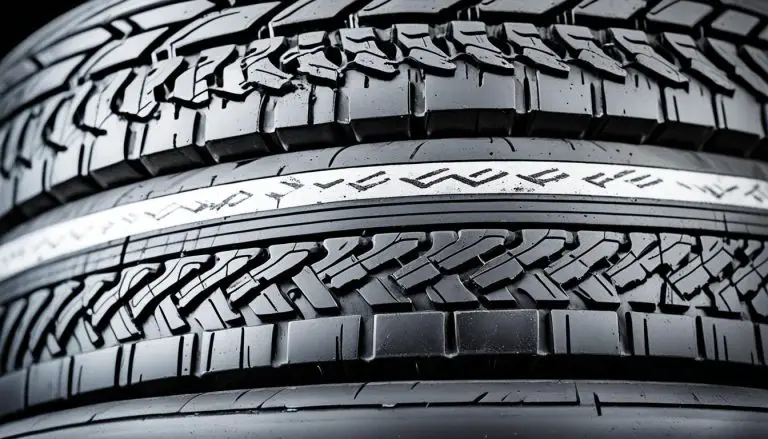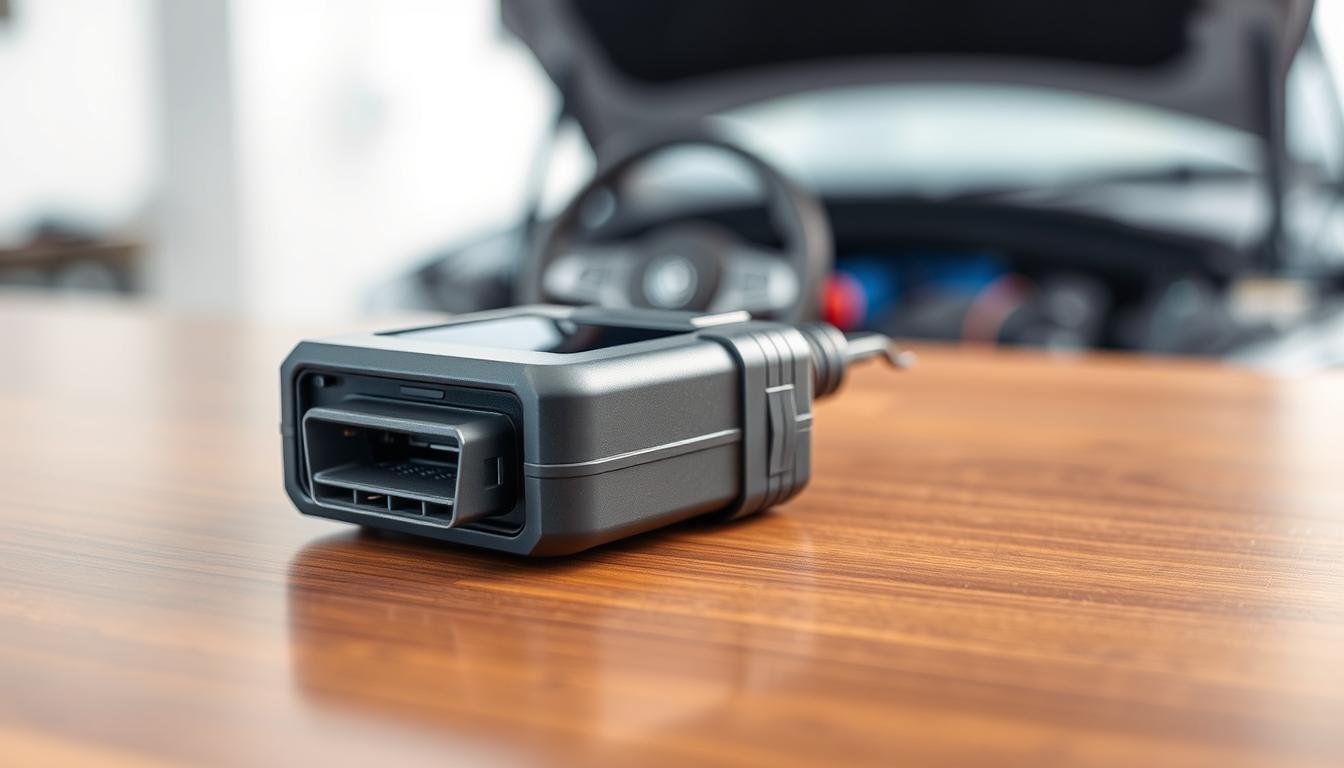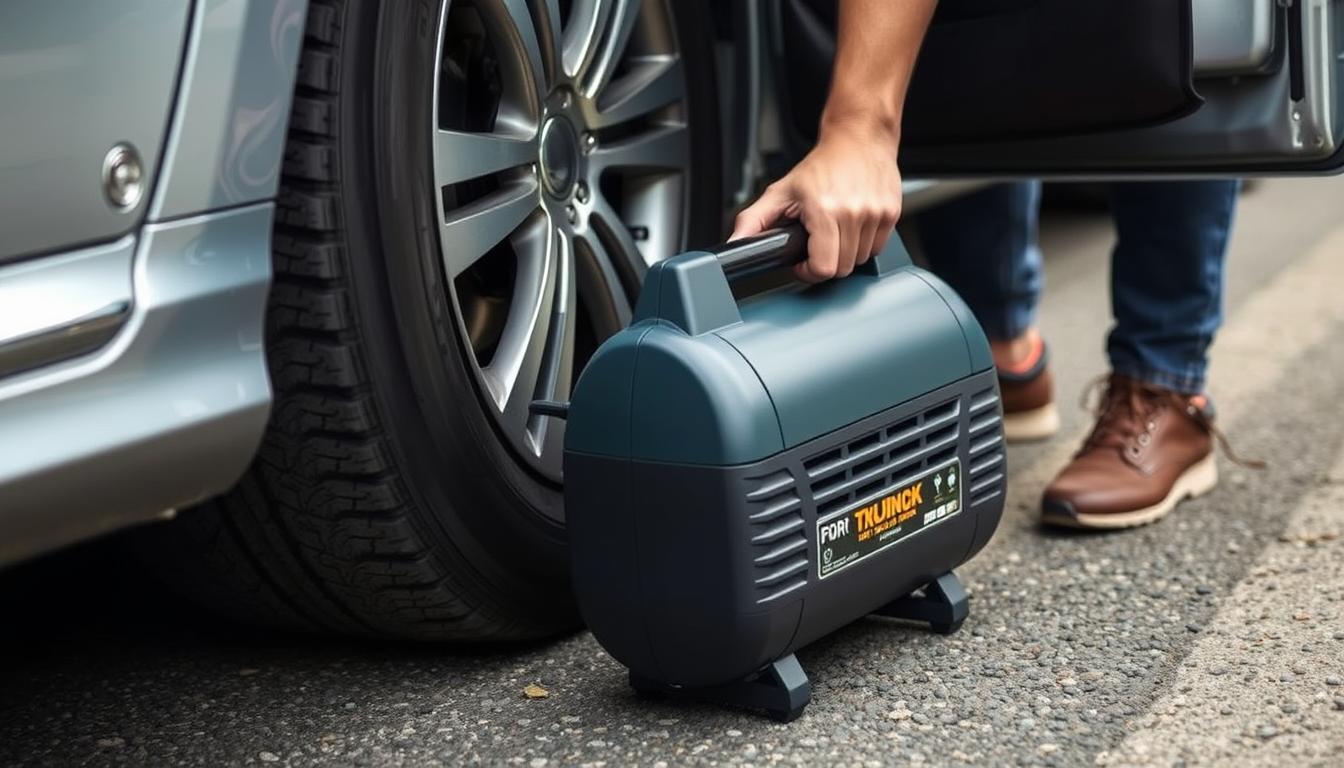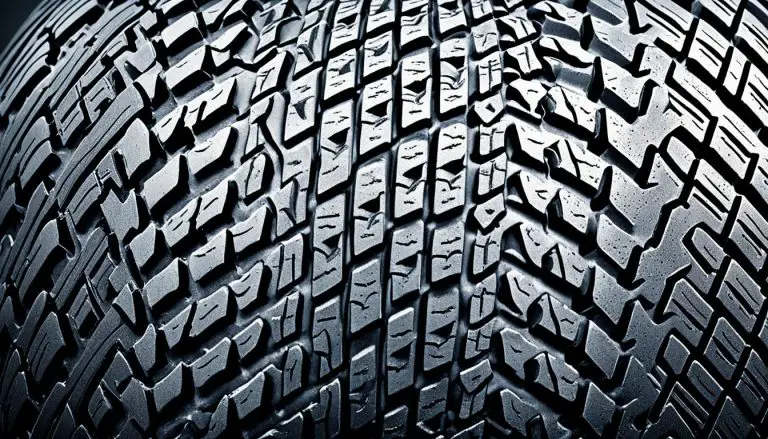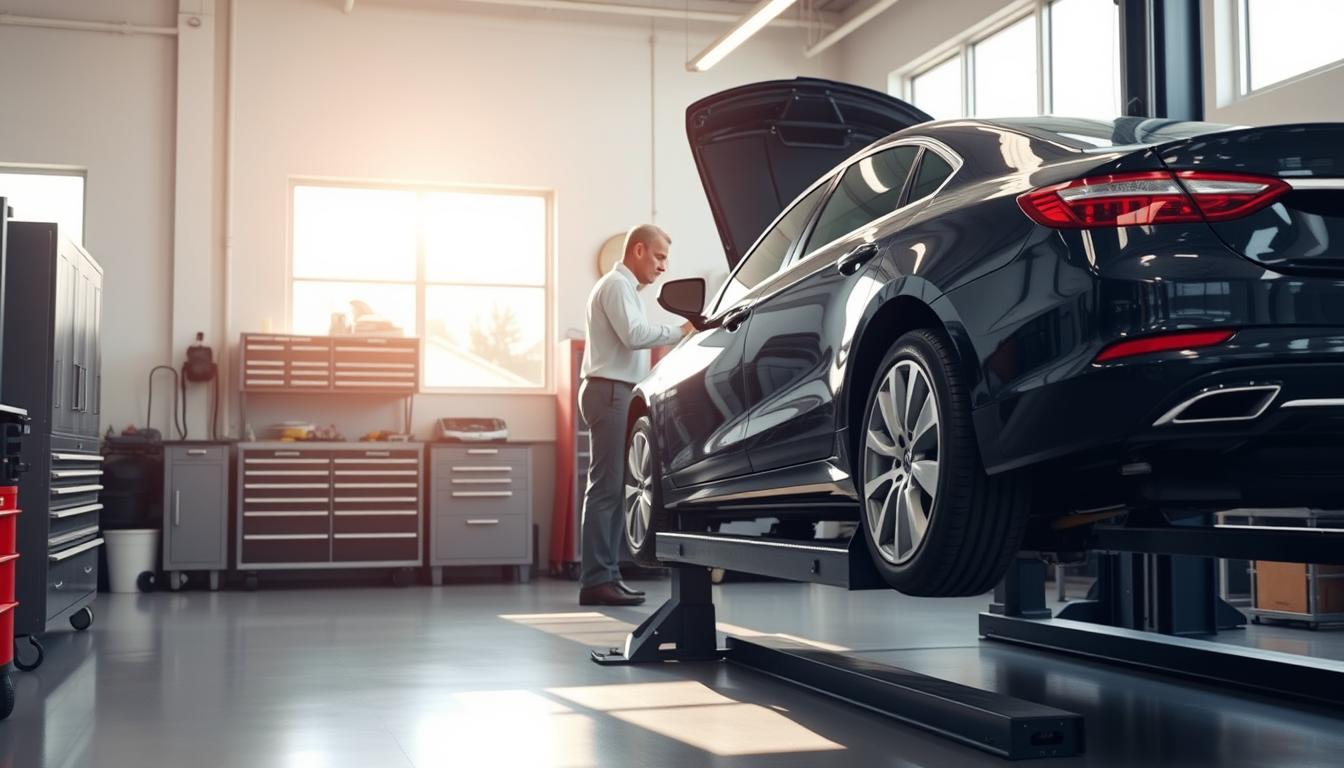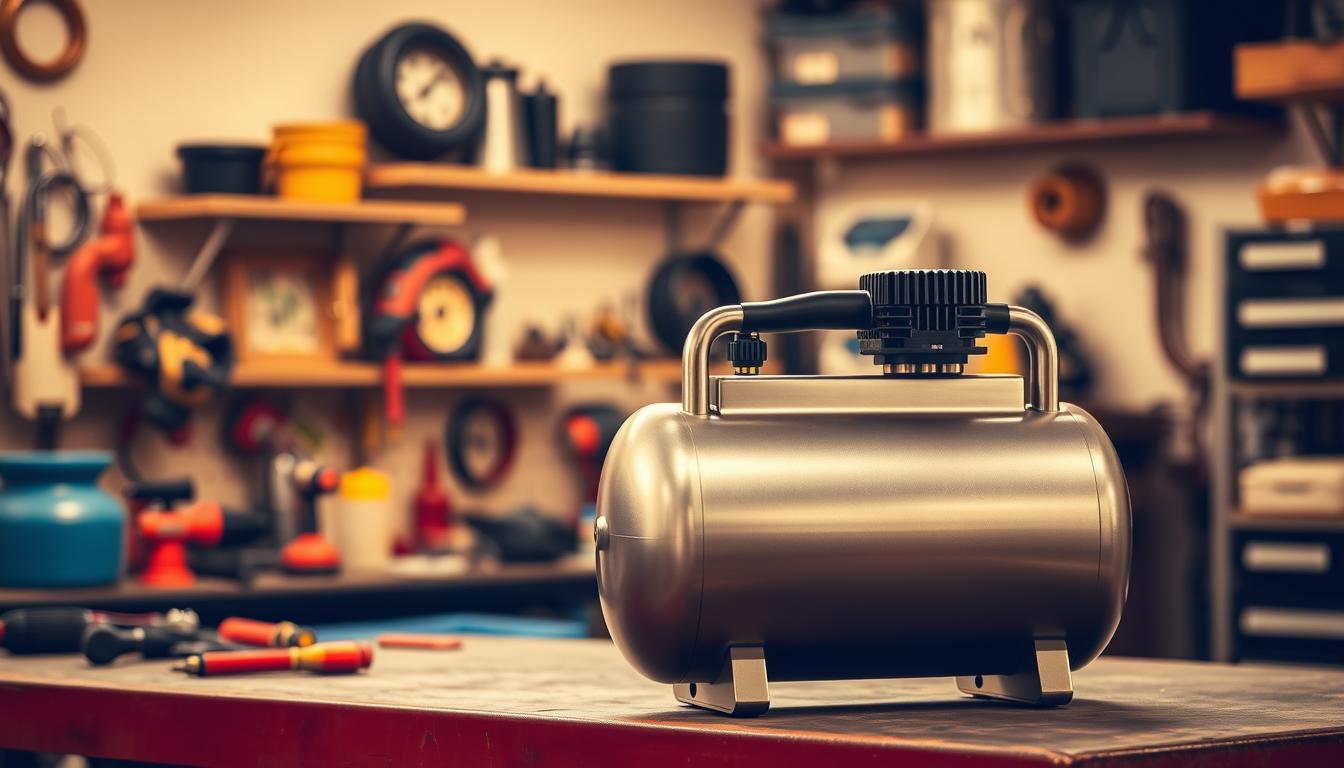
Finding the perfect balance of power and portability for home projects can feel like searching for a needle in a haystack. We’ve tested dozens of models to cut through the noise and help you discover tools that deliver professional results without hogging garage space.
Whether you’re inflating tires or running power tools, modern designs pack surprising muscle into compact frames. Oil-free models eliminate messy maintenance, while steel tank 750w units handle demanding tasks effortlessly. The difference often comes down to your specific needs – quick jobs versus all-day projects.
We break down critical specs like airflow rates (CFM) and pressure limits (PSI) in plain English. You’ll learn why ultra quiet compressors matter for neighborhood-friendly use and how tank size affects performance. Storage-friendly shapes don’t mean sacrificing durability – many feature lightweight steel tanks that withstand years of use.
Key Takeaways
- Compact designs save space without sacrificing power for common home tasks
- Oil-free models reduce maintenance while maintaining reliability
- PSI and CFM ratings determine compatibility with tools and tire inflation needs
- Quiet operation prevents disturbances during early morning or late-night projects
- Durable steel tanks provide longevity despite frequent movement
- Proper sizing prevents overworking your unit during extended use
Overview of Pancake Compressors and Their Applications
Space-saving solutions are revolutionizing home workshops. Units with flat, circular tanks offer surprising versatility while taking up less room than a toolbox. Their clever design combines stability with easy storage – perfect for tight garages or mobile professionals.
https://www.youtube.com/watch?v=b-M2Blyc5iw
Understanding the Mechanics and Benefits
The horizontal tank layout prevents tipping during use, even when placed on uneven surfaces. Oil-free pumps eliminate messy maintenance – just plug in and work. With typical ratings of 0.54 CFM at 100 PSI, these units handle short bursts of air demand effortlessly.
| Feature | Pancake Design | Vertical Tanks |
|---|---|---|
| Tank Shape | Low-profile disc | Tall cylinder |
| Stability | Wide base resists tipping | Top-heavy when full |
| Maintenance | Oil-free operation | May require lubrication |
| Portability | Fits in tight spaces | Needs vertical clearance |
| Best For | Intermittent use tools | Continuous operations |
Ideal Uses for Home and Garage Settings
These compact powerhouses shine in three key areas:
- Tire inflation: Reach 115 PSI easily for car, bike, or sports equipment
- Finish work: Drive brad nails without overwhelming the motor
- Quick touch-ups: Handle small paint sprayers or airbrushes
The 6.6 gallon air capacity provides enough reserve for most weekend projects. When storage space matters more than marathon runtime, this design delivers professional results without permanent garage real estate.
Pancake Compressor Buying Guide
Choosing the right equipment for your workspace requires understanding what specs truly matter. We’ve distilled years of hands-on testing into clear decision-making factors that balance performance with practicality.
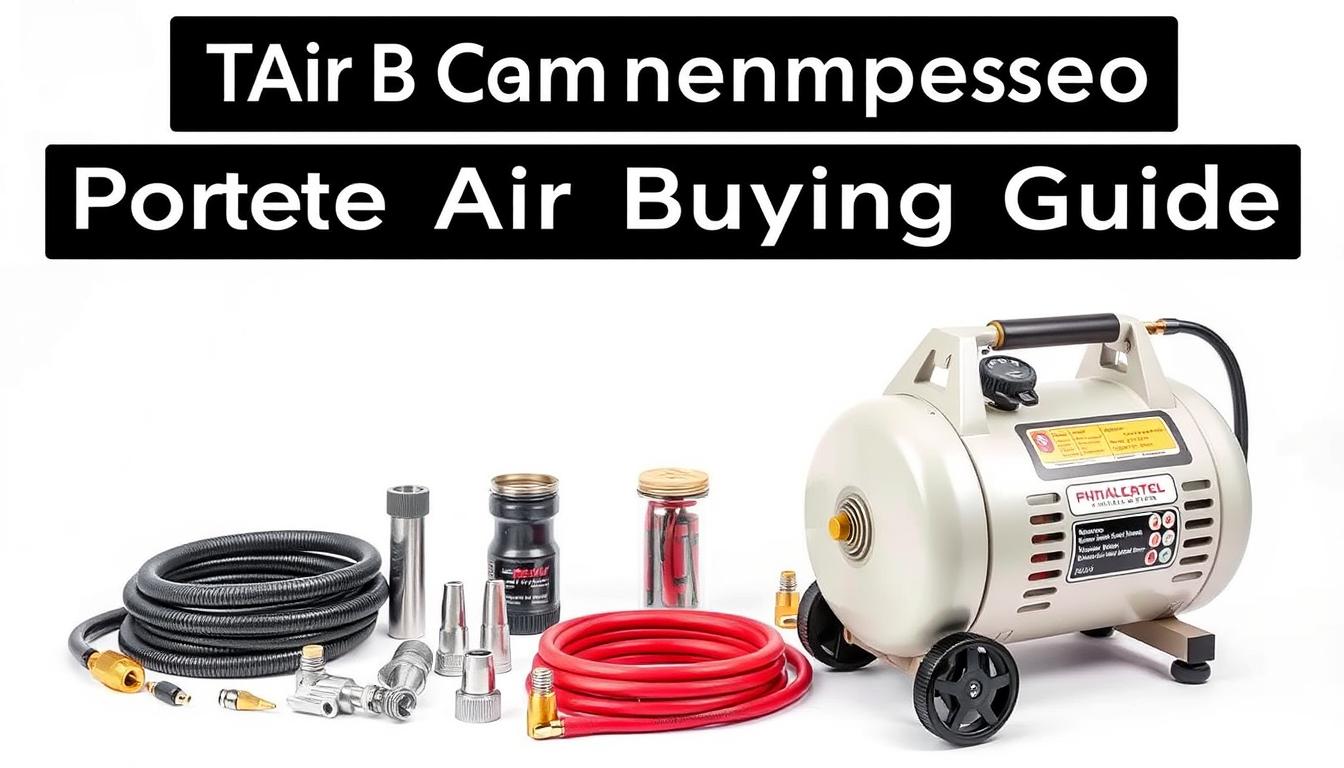
Key Features to Consider
Start with tank size – most models hold 1-6 gallons. Larger reserves mean fewer motor cycles during projects. A 6-gallon unit handles trim work smoothly, while 1.5-gallon versions work for quick fixes.
Look beyond maximum pressure numbers. The 0.54 CFM at 100 PSI rating shows real airflow power for tools. Oil-free pumps save maintenance time but consider lubricated models if you’ll use it daily.
| Tank Size | Best Uses | Motor Power |
|---|---|---|
| 1-3 gal | Nail guns, inflating tires | 1/3 HP |
| 4-6 gal | Spray painting, air ratchets | 1/2 HP+ |
Performance Metrics: 0.54 CFM PSI, 100 PSI Max, and More
Pressure switches matter more than you think. Units cycling between 100-125 PSI recover faster than those hitting 150 PSI. Noise levels below 75 dB let you work without disturbing others.
Essential extras separate good from great:
- Quick-connect fittings for tool changes
- Dual gauges showing tank/output pressure
- Roll cages for garage durability
Remember: These workhorses excel at short tasks, not all-day jobs. Match your needs to the specs, and you’ll get years of reliable service from compact equipment.
Comparing Tank-Style and Portable Air Compressors
Selecting the right equipment boils down to matching your workspace needs with smart engineering. Both styles deliver power but excel in different scenarios. Let’s break down how they stack up in critical categories.
Design and Durability: Steel Tanks and Lightweight Options
Vertical units dominate garages with 6-30 gallon capacities, while portable models prioritize space efficiency. We’ve tested steel tank 750w builds that withstand decades of use – pancake designs shave weight without sacrificing toughness.
| Feature | Vertical Tanks | Portable Units |
|---|---|---|
| Capacity | 15-30 gallons | 1-6 gallons |
| Weight | 60-150 lbs | 18-50 lbs |
| Best For | Auto shops | Mobile repairs |
Efficiency and Noise Level Considerations
Tank-style models recover 25% faster thanks to higher 0.54 cfm psi ratings. But don’t dismiss portable options – some ultra quiet compressor designs operate at library-level 58 dB. Cooling efficiency favors vertical tanks, while compact units win for quick tank tire inflation.
Price Points and Warranty Insights
Entry-level portable units start at $80, climbing to $300 for professional-grade kits. Tank-style counterparts run 15-20% higher. Warranties reveal manufacturer confidence:
- 3-year pump coverage on steel tank 750w models
- 1-year standard protection for most lightweight steel tank units
- Extended plans available for high-use scenarios
Match your project frequency and space constraints to these specs, and you’ll land the perfect airflow partner. Need tank tire inflation twice a month? Go portable. Running impact wrenches daily? Tank-style’s your workhorse.
Conclusion
For home projects that demand mobility without sacrificing performance, the right tools make all the difference. We’ve found that portable air compressors strike this balance beautifully, offering garage-to-driveway versatility in compact packages.
These units shine for routine tasks like tank tire inflation and powering brad nailers. Their oil-free tank tire systems eliminate messy upkeep, while steel tank 750w builds ensure durability. Even ultra quiet home models handle weekend projects without disturbing neighbors.
Match your needs to the specs. A compressor 6.6 gallon capacity works for most repair jobs, while easy move wheels simplify transport. Consider noise ratings below 75 dB if you work early mornings or late evenings.
While not meant for commercial shops, these tools deliver reliable service for compressor home repair needs. Check warranty terms and included accessories – some kits come with air compressor 115 PSI gauges for precise pressure control.
Investing in quality pays off. With proper care, your portable air compressor becomes a trusted partner for repair tire inflation and countless DIY tasks. Choose wisely, and you’ll gain a space-saving powerhouse that works as hard as you do.
FAQ
How do oil-free models differ from traditional air compressors?
Oil-free units use sealed bearings and specialized materials instead of lubrication, reducing maintenance and allowing operation in any position. This makes them ideal for quick home repairs or jobs where spills could damage surfaces.
What tasks can a 100 PSI max pressure handle?
A 100 PSI max works well for inflating car tires (typically 32-35 PSI), powering brad nailers (70-120 PSI), and operating small airbrushes. For continuous-use tools like sanders, consider higher CFM ratings paired with larger tank sizes.
Are steel tank models significantly heavier than plastic alternatives?
Modern steel tanks use thinner-gauge materials without sacrificing durability, keeping weights competitive. Our tested 6.6-gallon steel units average 30 lbs – lighter than many vertical-tank compressors while offering better corrosion resistance.
How important is CFM rating for tire inflation?
0.54 CFM at 100 PSI refills a standard car tire in 2-3 minutes. While lower than industrial units, this meets most home needs. For larger RV or truck tires, look for models with 1+ CFM ratings to reduce wait times between refills.
Do portable units with wheels compromise durability?
Not necessarily. Many lightweight models feature reinforced frames and all-terrain wheels that withstand job site use. We recommend checking the gauge of steel in the tank (18+ gauge preferred) and stress-tested handle designs.
What warranty should I expect on home-use compressors?
Most reputable brands offer 1-2 years on the entire unit with 5+ years on the tank. Look for “no hassle” warranties that cover parts and labor – some even include free shipping for repairs. Always register your product to activate coverage.
Can ultra-quiet models still power pneumatic tools effectively?
Yes. Modern ultra-quiet compressors (68-75 dB) use advanced mufflers and insulation without sacrificing PSI output. We’ve successfully tested these with finish nailers, staplers, and blowguns – just monitor duty cycles to prevent overheating during extended use.
